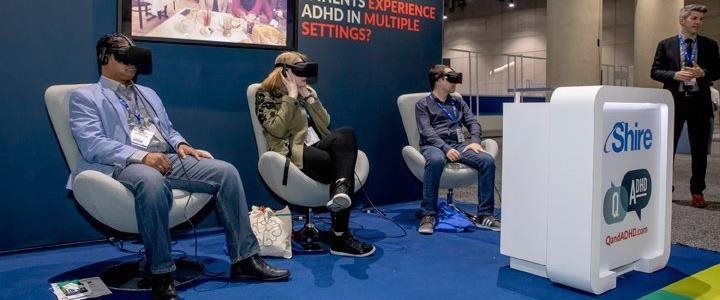
(BPT) – Have you ever struggled to explain what you were feeling to your doctor or healthcare professional? If so, you may have wondered if there was a way to help your doctor see the world through your eyes. Virtual reality technology is one way companies are working to help bridge the gap between what patients feel and what they are able to express, offering healthcare professionals a fresh perspective on their patients’ experiences.
Shire recently brought an immersive virtual reality experience to put healthcare professionals into the shoes of a hypothetical adult with Attention-Deficit/Hyperactivity Disorder (ADHD). While onsite at the American Psychiatric Association’s (APA) 170th Annual Meeting in San Diego, California attendees had the opportunity to experience ”A Day in the Life” simulation of an adult with ADHD in three settings.
“Shire has been committed to helping patients with ADHD and the healthcare professionals who treat them for the last two decades,” said Mark Rus, Head, U.S. Neuroscience Franchise at Shire. “We saw this incredible opportunity to help better educate healthcare professionals about adults with ADHD through this immersive technology, and hope that those who participated walked away with a better perspective and greater understanding and empathy for patient needs.”
According to the Diagnostic and Statistical Manual of Mental Disorders, Fifth Edition (DSM-5(R)), ADHD is a neurodevelopmental disorder that manifests as a persistent pattern of inattention and/or hyperactivity-impulsivity.
Some of the settings and daily realities the immersive virtual reality experience brings to life include:
*In the home, adults may often experience symptoms such as not seeming to listen when spoken to directly, forgetfulness in daily activities and losing things necessary for tasks and activities.
*After work, adults may have social activities and obligations. Adults may often experience symptoms such as difficulty sustaining attention in conversations, fidgeting with or tapping hands or feet, squirming in seat and interrupting or intruding on others.
*At work, adults may often experience symptoms such as failing to follow through on instructions and finish tasks, being easily distracted (including by unrelated thoughts) and exhibiting poor time management and organization.
These are not a complete list of ADHD symptoms. Having some of these symptoms does not necessarily mean you have ADHD. Only a healthcare professional can accurately diagnose ADHD.
Shire’s immersive virtual reality experience provided a first-hand look at how ADHD symptoms may impact adults with ADHD across different settings during their day. The experience reached more than 300 healthcare professionals at the meeting.






